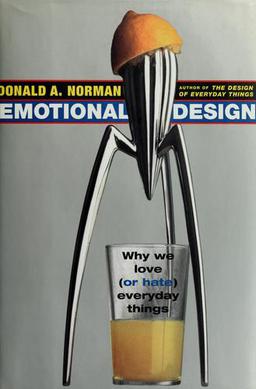Related Research Articles

A flavoring, also known as flavor or flavorant, is a food additive used to improve the taste or smell of food. It changes the perceptual impression of food as determined primarily by the chemoreceptors of the gustatory and olfactory systems. Along with additives, other components like sugars determine the taste of food.
Imagery is visual symbolism, or figurative language that evokes a mental image or other kinds of sense impressions, especially in a literary work, but also in other activities such as psychotherapy. Imagery in literature can also be instrumental in conveying tone (literature).

Consumer behaviour is the study of individuals, groups, or organisations and all the activities associated with the purchase, use and disposal of goods and services. Consumer behaviour consists of how the consumer's emotions, attitudes, and preferences affect buying behaviour. Consumer behaviour emerged in the 1940–1950s as a distinct sub-discipline of marketing, but has become an interdisciplinary social science that blends elements from psychology, sociology, social anthropology, anthropology, ethnography, ethnology, marketing, and economics.

Emotional Design is both the title of a book by Donald Norman and of the concept it represents.
In marketing, brand loyalty describes a consumer's positive feelings towards a brand and their dedication to purchasing the brand's products and/or services repeatedly regardless of deficiencies, a competitor's actions, or changes in the environment. It can also be demonstrated with other behaviors such as positive word-of-mouth advocacy. Corporate brand loyalty is where an individual buys products from the same manufacturer repeatedly and without wavering, rather than from other suppliers. Loyalty implies dedication and should not be confused with habit, its less-than-emotional engagement and commitment. Businesses whose financial and ethical values rest in large part on their brand loyalty are said to use the loyalty business model.
Music in advertising refers to music integrated into mass electronic media advertisements to enhance its success. Music in advertising affects the way viewers perceive the brand by different means and on different levels, and "can significantly affect the emotional response to television commercials." It also affects the musicians whose music is featured in advertisements.

Visual Merchandising is the practice in the retail industry of optimizing the presentation of products and services to better highlight their features and benefits. The purpose of such visual merchandising is to attract, engage, and motivate the customer towards making a purchase.
A touchpoint can be defined as any way consumers can interact with a business organization, whether it be person-to-person, through a website, an app or any form of communication. When consumers come in contact with these touchpoints it gives them the opportunity to compare their prior perceptions of the business and form an opinion.

Customer experience is the totality of cognitive, affective, sensory, and behavioral consumer responses during all stages of the consumption process including pre-purchase, consumption, and post-purchase stages. Pine and Gilmore described the experience economy as the next level after commodities, goods, and services with memorable events as the final business product. Four realms of experience include esthetic, escapist, entertainment, and educational components.

A brand is a name, term, design, symbol or any other feature that distinguishes one seller's good or service from those of other sellers. Brands are used in business, marketing, and advertising for recognition and, importantly, to create and store value as brand equity for the object identified, to the benefit of the brand's customers, its owners and shareholders. Brand names are sometimes distinguished from generic or store brands.
A sense is a biological system used by an organism for sensation, the process of gathering information about the world through the detection of stimuli. Although in some cultures five human senses were traditionally identified as such, many more are now recognized. Senses used by non-human organisms are even greater in variety and number. During sensation, sense organs collect various stimuli for transduction, meaning transformation into a form that can be understood by the brain. Sensation and perception are fundamental to nearly every aspect of an organism's cognition, behavior and thought.
Consumer neuroscience is the combination of consumer research with modern neuroscience. The goal of the field is to find neural explanations for consumer behaviors in individuals both with or without disease.
Emotional branding is a term used within marketing communication that refers to the practice of building brands that appeal directly to a consumer's emotional state, needs and aspirations. Emotional branding is successful when it triggers an emotional response in the consumer, that is, a desire for the advertised brand that cannot fully be rationalized. Emotional brands have a significant impact when the consumer experiences a strong and lasting attachment to the brand comparable to a feeling of bonding, companionship or love. Examples of emotional branding include the nostalgic attachment to the Kodak brand of film, bonding with the Jim Beam bourbon brand, and love for the McDonald’s brand.
The hedonic music consumption model was created by music researchers Kathleen Lacher and Richard Mizeski in 1994. Their goal was to use this model to examine the responses that listening to rock music creates, and to find if these responses influenced the listener's intention to later purchase the music. The article begins with a discussion of why the issue of music consumption is important. Music is then explored as an aesthetic product, prior to a discussion of what hedonic consumption is, as well as its origins, and concludes with an in-depth look at the model itself.
Experiential interior design (EID) is the practice of employing experiential or phenomenological values in interior experience design. EID is a human-centered design approach to interior architecture based on modern environmental psychology emphasizing human experiential needs. The notion of EID emphasizes the influence of the designed environments on human total experiences including sensorial, cognitive, emotional, social, and behavioral experiences triggered by environmental cues. One of the key promises of EID is to offer values beyond the functional or mechanical experiences afforded by the environment.
Sensory design aims to establish an overall diagnosis of the sensory perceptions of a product, and define appropriate means to design or redesign it on that basis. It involves an observation of the diverse and varying situations in which a given product or object is used in order to measure the users' overall opinion of the product, its positive and negative aspects in terms of tactility, appearance, sound and so on.

Aradhna Krishna is an American academic focused on marketing. As of 2006, she was considered one of the 50 most productive marketing professors in the world. Harvard Business Review recently acknowledged her as "the foremost expert in the field" of sensory marketing. She is the Dwight F. Benton Professor of Marketing at the Ross School of Business at the University of Michigan. She was awarded as a fellow of the Society for Consumer Psychology, the organization's highest honor, in recognition of her contributions to consumer psychology.
Sensory tourism is a form of tourism, that caters for people with vision impairment. Those suffering from vision impairment face many difficulties based around mainstream tourism such as access to information, navigation, safety and the knowledge of others around them. This has caused the visionless members of society to travel much less than those with no vision impairment. Combining the theories behind tourism in terms of its psychology and its relation to the senses, an inclusive experience for the visually disabled was developed. Sensory tourism engages the physical and multi-sensory aspects of tourism, enhancing the tourism experience specifically for those with, but also benefitting those without vision impairment.

Sensory history is an area of academic study which examines the role the five senses have played in the past. It developed partly as a reaction to the lack of serious attention given to sensory experience in traditional history books, which often treat sensory experience as a writing technique rather than a serious avenue of enquiry. Works of sensory history try to convey a deeper understanding of the past through an emphasis on physical experiences.

Olfactic communication is a channel of nonverbal communication referring to the various ways people and animals communicate and engage in social interaction through their sense of smell. Our human olfactory sense is one of the most phylogenetically primitive and emotionally intimate of the five senses; the sensation of smell is thought to be the most matured and developed human sense.
References
- ↑ Boatwright, Peter (2011). Built to love: creating products that captivate customers. Readhowyouwant.com Ltd. ISBN 978-1-4596-2689-8. OCLC 960187000.
- ↑ Hultén, Bertil (2011), "Sensory marketing: the multi-sensory brand-experience concept", European Business Review, 23 (3): 256–273, doi:10.1108/09555341111130245
- 1 2 3 4 Valenti, Cyril; Riviere, Joseph (May 2008), Marketing Dissertation: The concept of Sensory Marketing (PDF), Halmstad University
- ↑ Matthew, Healey (2008), What Is Branding?, Switzerland: RotoVision SA, pp. 110–111, ISBN 978-2-940361-45-8
- ↑ "Mint Innovation".
- ↑ "Harvard Business Review, March 2015". March 2015.
- ↑ Krishna, Aradhna. "An integrative review of sensory marketing: Engaging the senses to affect perception, judgment and behavior" (PDF). Journal of Consumer Psychology.
- ↑ Lindstrom, M. (2005), "Broad Sensory Branding", Journal of Product & Brand Management, 14 (2): 84–87, doi:10.1108/10610420510592554
- ↑ Lindstrom, M. (2008). "A Sense Of Wonder". In Lindstrom, M. (ed.). Buyology. United States of America: Doubleday. pp. 141–165.
- ↑ "Branding - Marketing & Strategy - Advertising - Social Media - More Than Branding".
- 1 2 Song, J. Retail Design and Sensory Experience: Design Inquiry of Complex Reality. Retrieved from http://www.drs2010.umontreal.ca/data/PDF/111.pdf
- ↑ Rajain, Pallavi (1 September 2016). "Sensory Marketing Aspects: Priming, Expectations, Crossmodal Correspondences & More". Vikalpa. 41 (3): 264–266. doi: 10.1177/0256090916652045 .
- 1 2 3 Lindstrom, Martin (2005). "Broad sensory branding". Journal of Product & Brand Management. 14 (2): 84–87. doi:10.1108/10610420510592554.
- ↑ M. Gobé, Emotional Branding: The New Paradigm for Connecting Brands to People (New York: Allworth, 2001), p. 107.
- 1 2 3 4 Hultén, Bertil, Niklas Broweus, and Marcus Van Dijk. "What is Sensory Marketing?." Sensory Marketing. Palgrave Macmillan UK, 2009. 1-23.
- ↑ Cassidy, Anne (2014-10-27). "Sensory marketing: the brands appealing to all five senses". The Guardian. ISSN 0261-3077 . Retrieved 2016-10-27.
- ↑ S. Reda, “Targeted Store Music Programs Strengthen Ties between Sound and Sales,” Stores, 80 (1998): 54–5.
- ↑ Trivedi, Bijal. "The hard smell." New Scientist 192.2582 (2006): 36-39.
- ↑ Hertenstein, Matthew J. (2002). "Touch: Its Communicative Functions in Infancy". Human Development. 45 (2): 70–94. doi:10.1159/000048154. ISSN 0018-716X. S2CID 11106073.
- 1 2 Krishna, Aradhna (2013). Customer sense: How the 5 senses influence buying behavior. Palgrave Macmillan. ISBN 978-0-230-34173-9.
- 1 2 3 Khan, H. (2014). How Retailers Manipulate Sight, Smell, and Sound to Trigger Purchase Behavior in Consumers. Retrieved from https://www.shopify.co.nz/blog/14193377-how-retailers-manipulate-sight-smell-and-sound-to-trigger-purchase-behavior-in-consumers